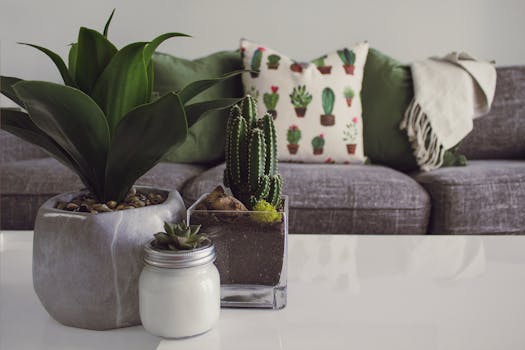Harmonizing the Decor with the Family’s Preferences for a Pleasant Space
Creating a harmonious living space that reflects the family’s preferences is essential for fostering a pleasant and inviting atmosphere. A well-decorated home not only enhances aesthetic appeal but also promotes emotional well-being and comfort. This article explores the importance of aligning decor with family preferences, offers practical tips for achieving this harmony, and highlights case studies that illustrate successful implementations.
The Importance of Personalization in Home Decor
Personalization in home decor is crucial for several reasons:
- Emotional Connection: A space that reflects personal tastes fosters a sense of belonging and comfort.
- Functionality: Decor that aligns with family activities and lifestyles enhances usability and enjoyment.
- Identity Expression: Home decor serves as a canvas for expressing individual and collective identities.
According to a survey conducted by the American Society of Interior Designers, 90% of homeowners believe that their home should reflect their personality. This statistic underscores the significance of creating a space that resonates with the inhabitants.
Understanding Family Preferences
Before embarking on a decor project, it is essential to understand the preferences of all family members. This can be achieved through open discussions and collaborative brainstorming sessions. Here are some strategies to gather insights:
- Family Meetings: Organize regular discussions where each member can share their ideas and preferences.
- Visual Inspiration Boards: Create boards using magazines or online platforms like Pinterest to visualize styles and themes.
- Surveys and Questionnaires: Distribute simple surveys to gauge preferences on colors, styles, and functionalities.
By involving everyone in the decision-making process, families can ensure that the final decor reflects a collective vision, making the space more enjoyable for all.
Practical Tips for Harmonizing Decor
Once family preferences are understood, the next step is to harmonize the decor. Here are some practical tips to achieve this:
- Choose a Color Palette: Select a cohesive color scheme that resonates with the family’s preferences. For instance, calming blues and greens can create a serene environment, while vibrant reds and yellows can energize a space.
- Incorporate Personal Items: Use family photos, heirlooms, or artwork created by family members to add a personal touch to the decor.
- Balance Functionality and Aesthetics: Ensure that the decor is not only visually appealing but also functional. For example, a stylish coffee table should also provide storage for magazines and remote controls.
- Mix Styles: Don’t be afraid to blend different styles that reflect various family members’ tastes. A modern sofa can be paired with vintage decor for an eclectic look.
Case Studies: Successful Harmonization of Decor
Several families have successfully harmonized their decor to reflect their preferences. Here are two notable examples:
The Smith Family: A Blend of Modern and Rustic
The Smith family, consisting of parents who love modern design and children who prefer rustic elements, created a harmonious living space by:
- Incorporating reclaimed wood furniture alongside sleek, contemporary pieces.
- Using a neutral color palette with pops of color from rustic decor items.
- Creating a family gallery wall that showcases both modern art and rustic photographs.
This blend not only satisfied everyone’s tastes but also created a unique and inviting atmosphere.
The Johnson Family: A Kid-Friendly Approach
The Johnsons prioritized functionality while ensuring their decor was appealing to both adults and children. They achieved this by:
- Choosing durable fabrics for furniture that are easy to clean.
- Incorporating playful elements, such as a chalkboard wall in the playroom.
- Designing a flexible layout that allows for both adult gatherings and children’s play.
This approach resulted in a space that was both stylish and practical, catering to the needs of all family members.
Conclusion
Harmonizing decor with family preferences is a vital aspect of creating a pleasant living space. By understanding individual tastes, involving all family members in the decision-making process, and implementing practical decor strategies, families can achieve a home that is both beautiful and functional. The examples of the Smith and Johnson families illustrate that with thoughtful planning and collaboration, it is possible to create a harmonious environment that reflects the unique identity of the family. Ultimately, a well-decorated home not only enhances aesthetic appeal but also nurtures emotional well-being, making it a true sanctuary for all its inhabitants.
